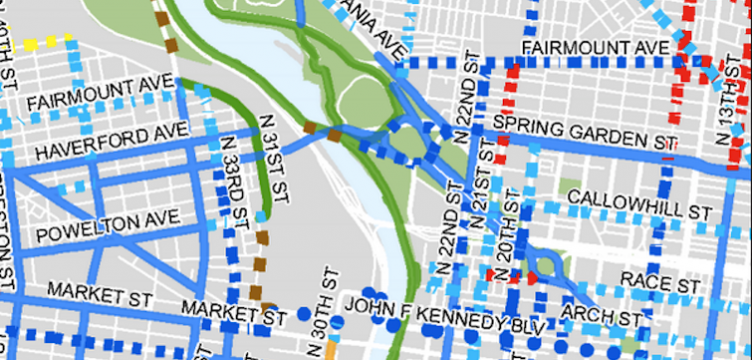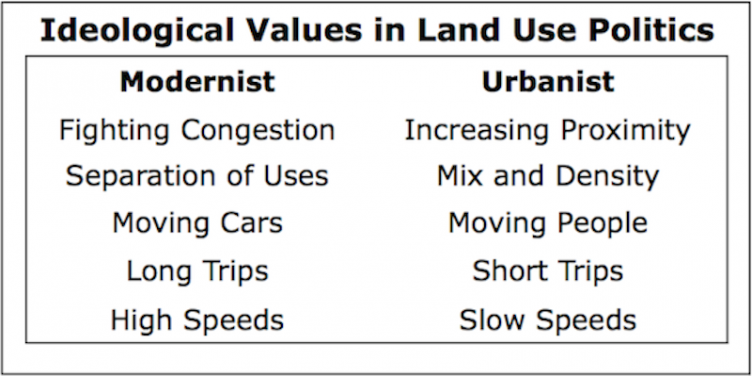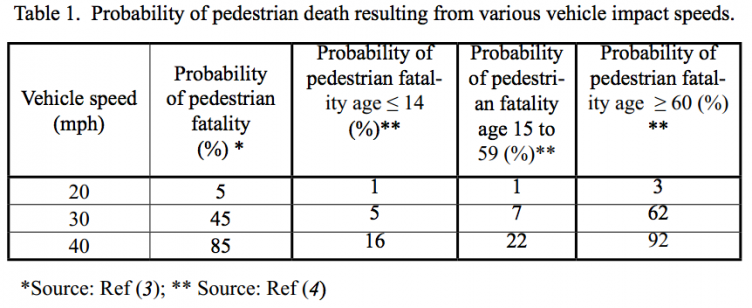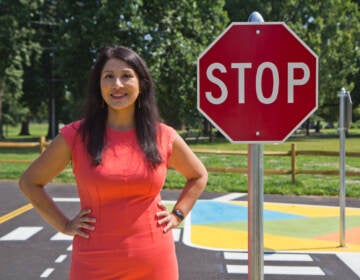Councilman Bill Greenlee still won’t let Streets Dept. stripe bike lane planned for 22nd St.

When we last checked in on the 22nd St. bike lane saga, Councilman Bill Greenlee was opposing a bike lane for 22nd Street that is in the city’s adopted Pedestrian and Bicycle Plan (2012), and which the Streets Department would have striped automatically had the Councilman not intervened.
The bike lane between Spring Garden St. and Fairmount Ave. would be an extension of the existing bike lane to the south, which cuts off at Spring Garden St. But while the bike lane wouldn’t remove any parking or an official travel lane (“official” being the operative word), Greenlee opposes narrowing travel lanes in any way, and has offered a variety of what appear to be hunch-based reasons for his differences with the city’s transportation planning and engineering professionals.
The latest development is that Councilman Greenlee has now rejected a revised plan, which called for striping a single wide travel lane, and no bike lane. Sarah Clark Stuart has the report over at the Bicycle Coalition blog:
By all accounts, Councilman Bill Greenlee objects to any striping of the roadway because he says he is concerned that one travel lane is not enough to handle the volume of cars and buses that use 22nd Street. Additionally, he says several residents have expressed to him their opposition to a bike lane or one wide travel lane.
We know that there exists neighborhood support for the bike lane, as several (presumably different) neighbors have expressed their support to Councilman Greenlee and Council President Darrell Clarke, then informing us that they did so.
Our requests for a meeting with Councilman Greenlee and a public meeting for him to hear from all near neighbors were both refused.
Greenlee has told some of his constituents that he believes a bike lane would make the street less safe than the current unstriped free-for-all, but his argument to the Bicycle Coalition makes a different case: that the level of service for cars would be too low, and motorists won’t be able to drive fast enough at rush hour.
In a phone interview, Greenlee attempted to clarify those seemingly counterpoised arguments.
“I think that it will, especially at busy hours, completely back up 22nd St. north of Spring Garden,” he said, “Now, I agree that 22nd St. does narrow north of Spring Garden, until you get to about Wallace St. But there is room for two lanes of traffic. I know that, because I’ve been on it 55,000 times, in a bus, in a car, walking. I don’t live that far from there.”
Greenlee contended that 22nd St. would be less safe with a bike lane, because it would get congested at rush hour, and people would try to illegally pass other cars or buses.
“From a traffic engineering standpoint – and I’ve been told this many times – when traffic gets backed up, people start to do stupid stuff. They’ll try to get around people, all that kind of stuff. And I just think it is not safe to back traffic up, as I believe, and some of the neighbors who have lived on that street for a long time believe.”
Asked whether designing a neighborhood street’s operating speed for peak car travel times would lead to dangerously high speeds for cars during other non-rush hour times, Greenlee dismissed the argument.
“I think lots of people drive too fast all the time. Whether it’s 10 or 1:00 in the morning, one lane or two lanes, are some fools going to drive too fast up 22nd Street?” he says “Sure they are – I mean, unfortunately they drive too fast up 20th street and 29th Street.”
But isn’t driver comfort traveling at different speeds based on how wide the lanes are? That’s one of the premises of the NACTO urban street design guide we wrote about last week, but Greenlee doesn’t buy it.
“I’m not sure about that. If there’s no other things around …when I’m on that street a lot of the time I’m in a bus. The majority of the people who traverse that street, now, and even if there was a bike lane, the vast majority are in a car or bus. I believe that many times the bus is driving on the street they’re going to get backed up, and I think their needs have to be considered.”
Councilman Greenlee’s argument boiled down is that fast throughput for buses requires two mixed-traffic lanes for general traffic, and that the road should be designed for the two peak times of the day when people are passing through the neighborhood, rather than for off-peak shorter trips within the neighborhood.
This chart may help clarify some of the assumptions behind Greenlee’s politics:

Greenlee is saying that his priorities for 22nd St. are fighting congested, long trips over short trips within the neighborhood, and fast speeds for vehicles. The Bicycle Coalition’s argument is nearly the opposite – priority for short off-peak trips within the neighborhood, and slower speeds for safety.
For the record, the relationship between design speed and bike and pedestrian safety is well-documented. The Federal Highway Administration has found that the probability of a pedestrian dying from a car crash at 20 mph is just 5%, but it jumps to 45% at 30 mph – or 62% for seniors. Crashes are less frequent and less deadly when motorists are driving slowly, and are on high-alert for cyclists and pedestrians.

The other politically-significant issue here is what 5th District Councilman (and Council President) Darrell Clarke wants to do. Councilman Greenlee is the 15th Ward leader for the area, not the District Councilperson. Greenlee frequently introduces bills on Clarke’s behalf, because the President doesn’t introduce legislation, which some readers have pointed out means Clarke is unlikely to cross Greenlee.
But it would be interesting to hear Clarke’s views on the issue since he is, after all, the person elected to make decisions about the more local issues that arise in City Council, like streets and land development. Phone calls and email to Councilman Clarke’s office were unreturned at the time of posting.
WHYY is your source for fact-based, in-depth journalism and information. As a nonprofit organization, we rely on financial support from readers like you. Please give today.





